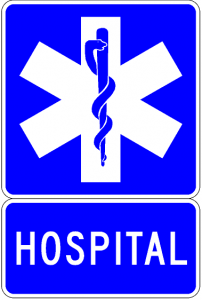 The U.S. government provides a variety of publicly available databases that include metrics on the performance of US hospitals, including patient experience (PX) database, health outcome database, process of care database and medical spending database. Applying Big Data principles on these disparate data sources, I integrated different metrics from their respective databases to better understand the quality of US hospitals and determine ways they can improve the patient experience and the overall healthcare delivery system. I spent the summer analyzing this data, and wrote many posts about it.
The U.S. government provides a variety of publicly available databases that include metrics on the performance of US hospitals, including patient experience (PX) database, health outcome database, process of care database and medical spending database. Applying Big Data principles on these disparate data sources, I integrated different metrics from their respective databases to better understand the quality of US hospitals and determine ways they can improve the patient experience and the overall healthcare delivery system. I spent the summer analyzing this data, and wrote many posts about it.
Why the Patient Experience (PX) has Become an Important Topic for U.S. Hospitals?
The Centers for Medicare & Medicaid Services (CMS) will be using patient feedback about their care as part of their reimbursement plan for acute care hospitals (see Hospital Value-Based Purchasing (VBP) program). The purpose of the VBP program is to promote better clinical outcomes for patients and improve their experience of care during hospital stays. Not surprisingly, hospitals are focusing on improving the patient experience to ensure they receive the maximum of their incentive payments.
Key Findings from Analyses of Big Data of US Hospitals
Hospitals, like all big businesses, struggle with knowing “if you do this, then you will succeed with this.” While hospital administrators can rely on gut feelings, intuition and anecdotal evidence to guide their decisions on how to improve their hospitals, data-driven decision-making provides better, more reliable, insights about real things hospital administrators can do to improve their hospitals. While interpretation of my analyses of these Big Data are debatable, the data are what they are.
I have highlighted some key findings below (with accompanying blog posts) that provide value for different constituencies: 1) healthcare consumers can find the best hospitals, 2) healthcare providers can focus on areas that improve how they deliver healthcare, and 3) healthcare researchers can uncover deeper insights about factors that impact the patient insights, health outcomes and best practices.
- Healthcare Consumers Can Use Interactive Maps of US Hospital Ratings to Select the Best Provider. Healthcare consumers can use interactive maps to understand the quality of their hospitals with respect to three metrics: 1) Map of US hospitals on patient satisfaction, 2) Map of US hospitals on health outcomes, and 3) Map of US hospitals on process of care. Take a look at each to know how your hospital performs.
- Hospitals Can Use Patient Surveys to Improve Patient Loyalty. Hospitals might be focusing on the wrong areas to improve patient loyalty. While researchers found that hospitals’ top 3 priorities to improve the patient experience are focused on 1) reducing noise, 2) improving patient rounding and 3) the improving the discharge process and instructions, analysis of HCAHPS survey results show that hospitals will likely receive greater return on their improvement investment (ROI) if they focus on improving the patient experience along these dimensions: 1) pain management, 2) staff responsiveness and 3) staff explaining meds.
- There are Differences in the Patient Experience across Acute Care and Critical Access Hospitals. Acute care hospitals receive lower patient satisfaction ratings compared to critical access hospitals. Differences across these two types of hospitals also extends to ways to improve the patient experience. The key areas for improving patient loyalty/advocacy differ across hospital types. ACHs need to focus on 1) Staff explains meds, 2) Responsiveness and 3) Pain management. CAHs need to focus on 1) Pain management and 2) Responsiveness.
- Patient Satisfaction is Related to Health Outcomes and Process of Care Measures. The patient experience that had the highest correlation with readmission rates and process of care measures was “Given Information about my Recovery upon discharge“. Hospitals who received good patient ratings on this dimension also experienced lower readmission rates and higher process of care scores compared to hospitals with poor patient ratings in this area.
- Medical spending is Not Related to Patient Satisfaction. I found that hospitals with lower medical spend per patient are able to deliver a comparable patient experience to hospitals with greater medical spend per patient. A survey found that hospitalsneeds to focus on specific patient experience attributes to improve patient loyalty. How to Improve Patient Loyalty.
The value of insights gained from combining, integrating disparate databases (especially ones including both attitudinal and operational/objective metrics) provide much greater value than any single database can provide by itself. That is one of the major values of using Big Data principles. The integrated health care Big Data set provided rich in insights and allowed us to answer bigger questions about how to best improve the patient experience and health outcomes.



